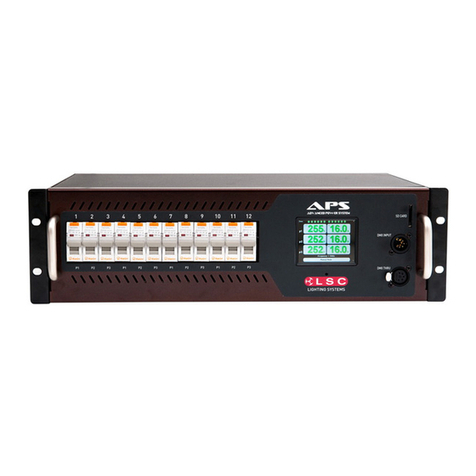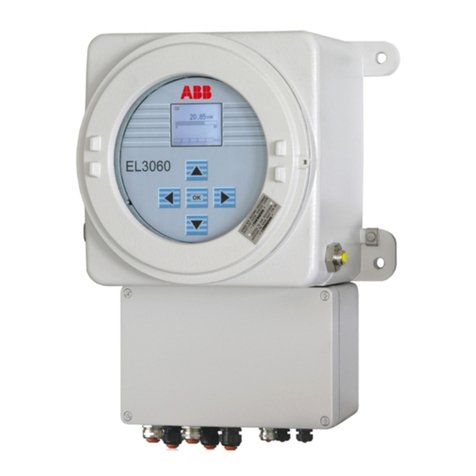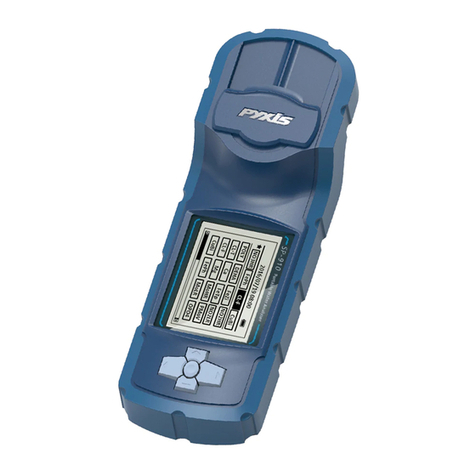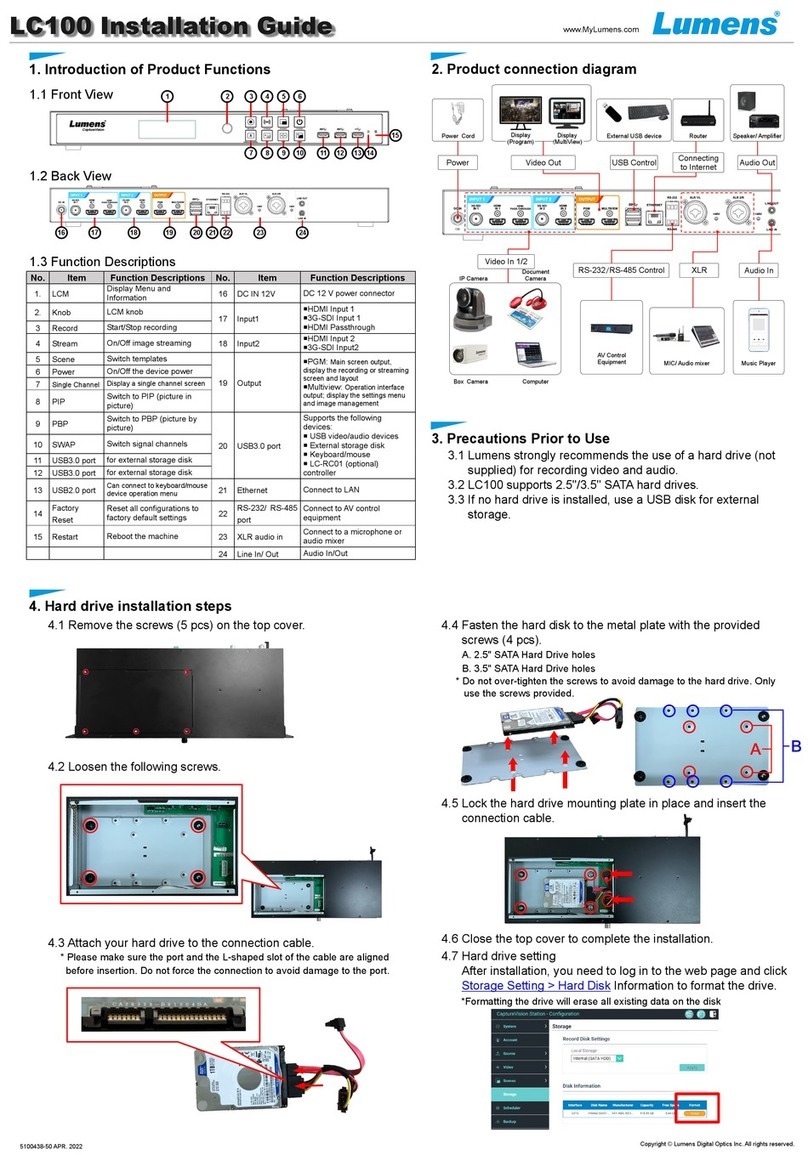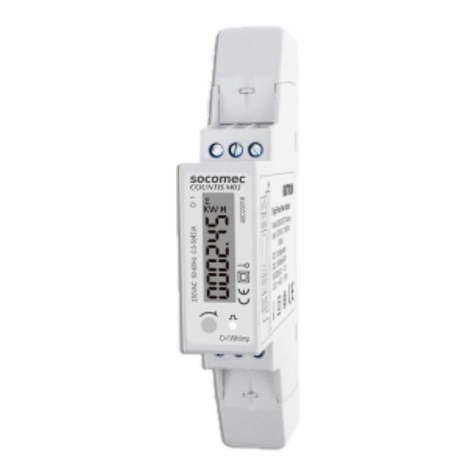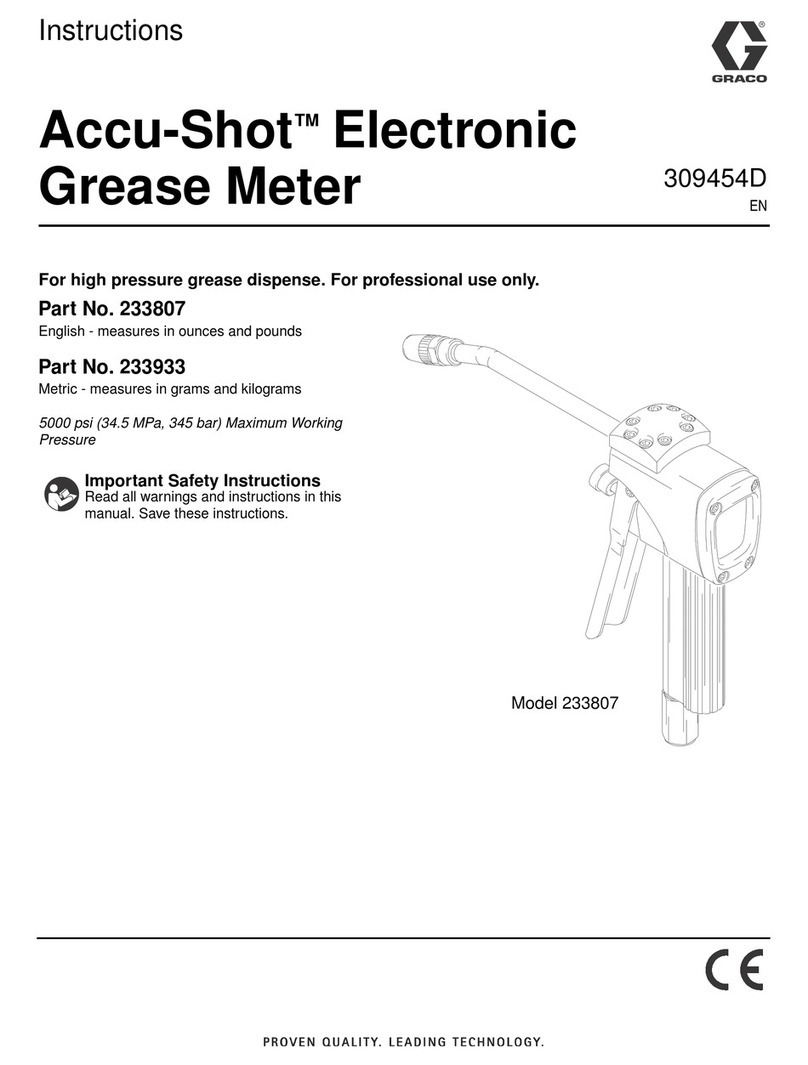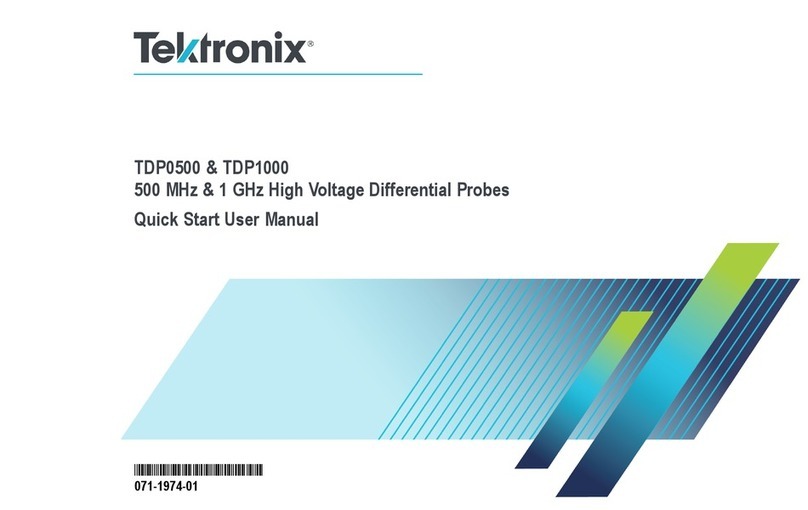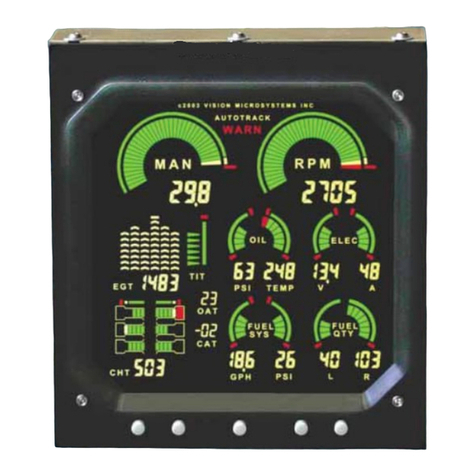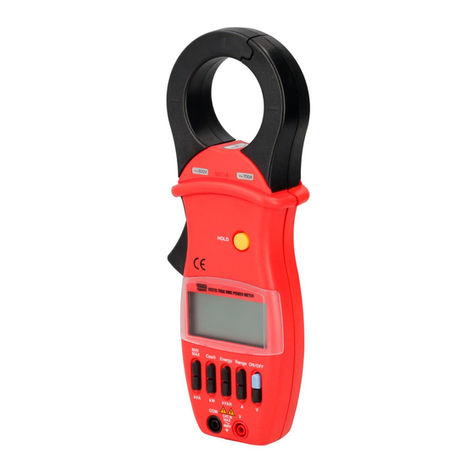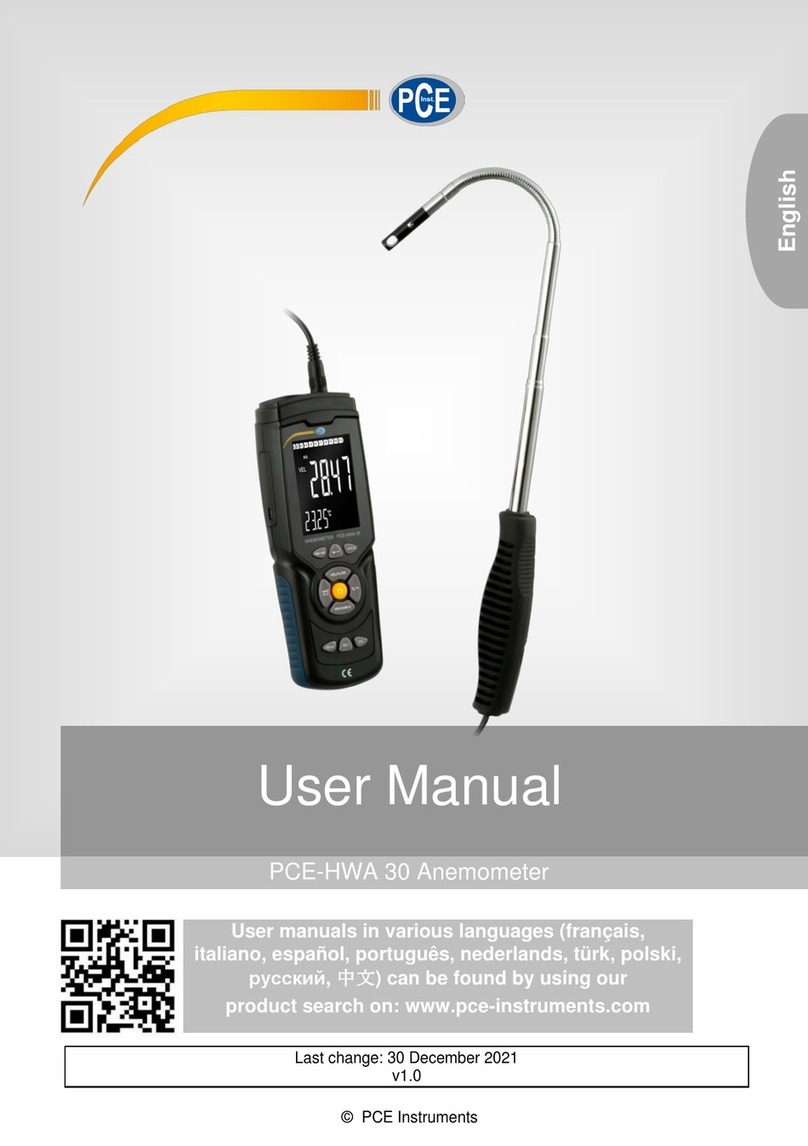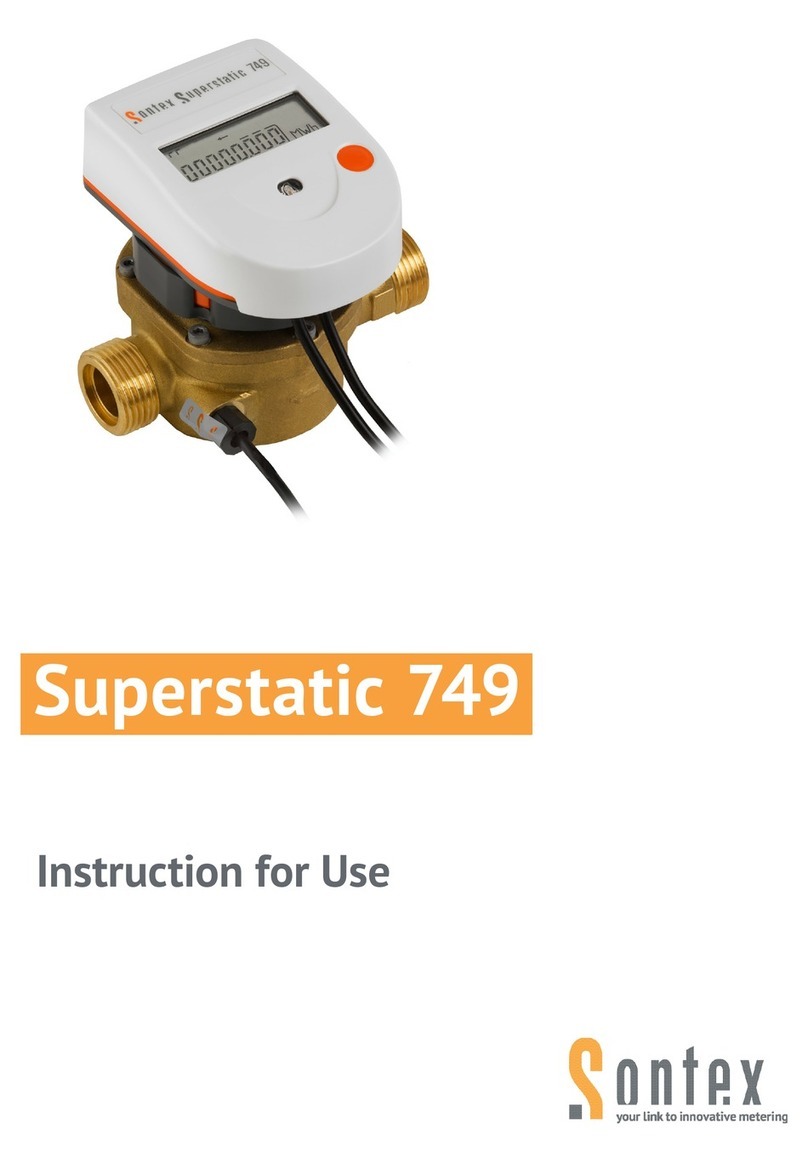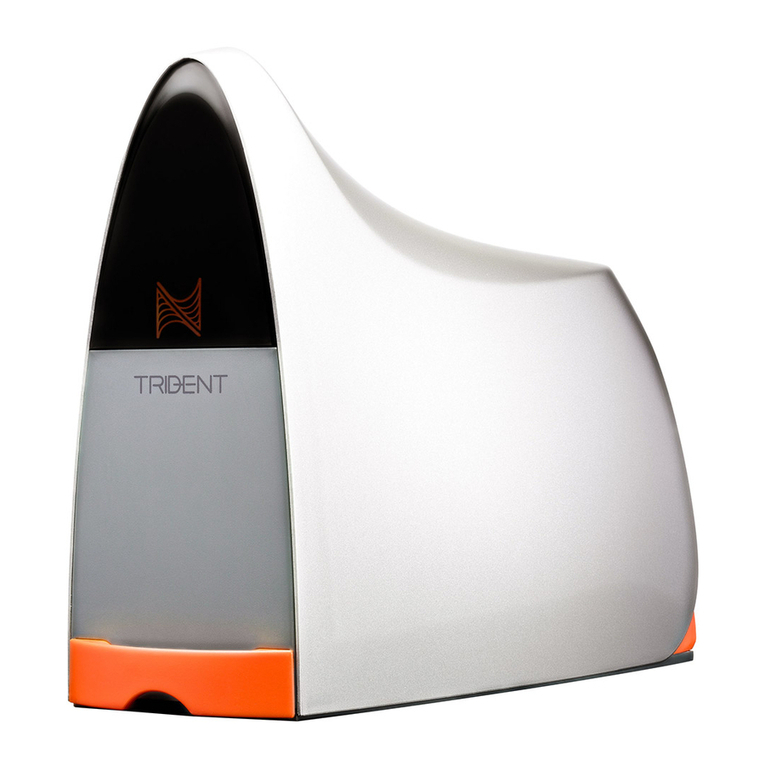Global Specialties LCR-600 User manual


Table of Contents
1Safety 2
1.1 Precautions 2
1.2 Compliance 4
2Product Contents and Inspection 4
3Introduction 5
3.1 Overview 5
3.2 Impedance Parameters 5
3.3 ESR or RP 7
3.4 Quality and Dissipation Factors 8
4Product Description 8
4.1 Primary Measurement Display 8
4.2 Secondary Measurement Display 9
4.3 Front Panel Description 9
4.4 Rear Panel Description 10
5Operating Instructions 11
5.1 Connecting the LCR-600 11
5.2 Powering On 11
5.3 Open Circuit / Short Circuit Compensation 11
5.4 Auto LCR Mode 12
5.5 Auto Mode 12
5.6 Measuring Inductance 13
5.7 Measuring Capacitance 13
5.8 Percentage Error 14
5.9 Sorting Function Mode 14
5.10 Display Hold Mode 15
5.11 Measuring Frequency 15

1
5.12 Measuring DC Resistance 15
5.13Connecting to a Computer 15
6Maintenance 15
6.1 Preventive Maintenance 15
6.2 Fuse Replacement 16
6.3 Cleaning 17
7Appendix 17
7.1 USB/RS232 Connection 17
7.1.1 Data Transmission Configuration 17
7.1.2 Data Code 17
7.1.3 Control Code 17
7.1.4 Data Format Description 17
7.2 Open / Short Compensation 18
7.3 Selecting the Serial / Parallel Mode 19
7.3.1 Capacitor 20
7.3.2 Inductor 20
7.4 Calibration Sequence 21
8Specifications 24
8.1 General 24
8.2 LCD Display 24
8.3 Accuracy 24
8.3.3 Impedance Accuracy (Ae) 24
8.3.4 CDUT Accuracy 25
8.3.5 LDUT Accuracy 26
8.3.6 D Value Accuracy 26

2
8.3.7 Q value Accuracy 26
8.3.8 θvalue Accuracy 26
8.3.9 Secondary Display Parameter Accuracy 27
9Service and Warranty Information 28
9.1 Warranty 28
9.2 Calibration and Repair 29
1 Safety
1.1 Precautions
WARNING: The normal use of test equipment involves a
certain amount of risk from electrical shock. The following general
safety precautions must be observed during all phases of operation,
service, and repair of this instrument. Failure to comply with these
precautions or with specific warnings elsewhere in this manual
violates the safety standards of the design, manufacture, and
intended use of the instrument. The manufacturer assumes no
liability for the customer’s failure to comply with these requirements.
You will significantly reduce the risk factor if you know and
observe the following safety precautions:
•Don’t expose yourself to high voltage needlessly.
•Remove housings and covers only when necessary.
•Turn off equipment while making test connections on high
voltage circuits.

3
•Discharge high voltage capacitors after removing power.
•If possible, familiarize yourself with the equipment being
tested and the location of its high voltage points. However,
remember that high voltage may appear at unexpected
points in defective equipment.
•Use an insulated floor material or large insulated floor to
stand on, and an insulated work surface on which to place
equipment. Make certain such surfaces are not damp or
wet.
•Use the time proven “one hand in the pocket” technique
while handling an instrument probe.
•Be particularly careful to avoid contacting a nearby metal
object, which could provide an unwanted ground return
path.
•When testing AC power equipment, remember that AC line
voltage is usually present on some power input circuits such
as the on-off switch, fuse, power transformer, etc. anytime
the equipment is connected to an AC outlet, even if the
equipment is turned off.
•Some equipment with two-wire AC power cords, including
some with polarized power plugs, are the “hot chassis” type.
A plastic or wooden cabinet insulates the chassis to protect
the customer. When the cabinet is removed for servicing, a
serious shock hazard exists if the chassis is touched.
•On test instruments, or any equipment with a 3-wire AC
power plug, use only a 3-wire outlet. This is a safety feature
to keep the housing or other exposed elements grounded.

4
1.2 Compliance
The LCR-600 is CE compliant.
2 Product Contents and Inspection
This unit is tested prior to shipment. It is therefore ready for
immediate use upon receipt. An initial physical inspection should be
made to ensure that no damage has been sustained during
shipment.
Inspect the packing box on receipt for any external damage. If
any external damage is evident, remove the instrument and visually
inspect its case and parts for any damage. If damage to the
instrument is evident, a description of the damage should be noted
on the carrier’s receipt and signed by the driver or carrier agent.
Save all shipping packaging for inspection. Forward a report of any
damage to the agent through which the unit is procured.
Retain the original packing in case subsequent repackaging for
return is required. Use of the original packing is essential.
After the mechanical inspection, verify the contents of the
shipment. The items included in this package are:
•LCR Meter
•Power Cord
•User Manual
•BNC Plug to Clip Lead Wire

5
3 Introduction
3.1 Overview
The LCR-600 is a high precision test instrument used for
measuring the inductance (L), capacitance (C), and resistance (R)
of an electrical component.
The LCR-600 has an operational frequency range of 100 Hz to
100 kHz and basic measurement accuracy of 0.3%. There is a dual
LCD display, measurement voltage fixed at 0.6 V, auto-detect
function, and open-circuit /short-circuit compensation.
Use the LCR-600 to:
•Check ESR values of capacitors and inductors
•Sort and/or select components
•Measure unmarked and unknown components
•Measure capacitance, inductance, or resistance of cables,
switches, circuit board foils, etc.
3.2 Impedance Parameters
The LCR-600 provides both DC and AC impedance
measurements. Electrical impedance is the measurement of the
opposition that a circuit presents to current when a voltage is
applied.

6
When showing the impedance as vector (Z), it is the addition of
resistance (R) and reactance (X). On the Cartesian coordinate
system this will be as shown in Figure 1.
Z=( R2+ X2)½
θ= Tan-1 (X/R)
Z= (Impedance)
R= (Resistance)
X= (Reactance)
Reactance contains (Inductive) XLand (Capacitive) XC
components :
XL= ωL = 2πfL
XC= 1/(ωC)= 1/(2πfC)
C = Capacitance (F)
f = Frequency (Hz)
L = Inductance (H)
Figure 1

7
3.3 ESR or RP
Ideally, capacitors, inductors, or resistors only contribute
capacitance, inductance, or resistance (respectively) to a circuit. But
in reality, these components will always have non-zero values of the
other two characteristics. For instance, a capacitor will not simply
offer capacitance but will have some degree, however small, of
resistance and inductance. These non-zero values we call the
parasitics. Often they are negligible but depending on the degree of
accuracy needed, they can be quite significant.
To more accurately describe a component we can imagine that
rather than having one real-world capacitor let’s say, instead we
have an ideal capacitor (zero parasitics) in series with a resistor. We
call this imaginary resistor the ESR (equivalent series resistance).
By using this ESR method, we get a much more accurate value for
the true capacity or inductance of the component.
The measurement of the equivalent impedance can be
calculated both in series (ESR) and parallel (RP) relationship
between the real and imaginary components. Their equations are as
follows:
Figure 2

8
3.4 Quality and Dissipation Factors
Other, secondary measurements of the LCR-600 include
Quality Factor (Q) and Dissipation Factor (D). These two
measurements are actually reciprocals of each other. They refer to
the damping characteristic of the electrical component. A higher
Quality Factor (Q) means that the energy being transmitted through
the component will “die out” more slowly. The component holds onto
the energy longer. Dissipation Factor means just the opposite. It is a
measure of how quickly the energy degrades.
Q = 1/D = ωLs/Rs= 1/ωCsRs= ωCpRp
Usually, Quality Factor (Q) relates to the inductance
measurement and the Dissipation Factor (D) relates to the
capacitance measurement.
4 Product Description
4.1 Primary Measurement Display
DCR: DC Resistance
Lp: Parallel Inductance
Ls: Serial Inductance
Cp: Parallel Capacitance
Cs: Serial Capacitance
Rp: Parallel Resistance
Rs: Serial Resistance

9
4.2 Secondary Measurement Display
L/C mode:
θ: Phase Angle
D: Dissipation Factor
Q: Quality Factor
RP: Parallel Impedance
ESR: Serial Impedance
4.3 Front Panel Description
Figure 3
Control/Indicator Description
1 Main Display LCD
2 Secondary Display LCD
3 Power Button
4 FUNC (Auto LCR/L/C/R/DCR Function)
5 FREQ (Frequency Range)

10
4.4 Rear Panel Description
Control/Indicator Description
22 Input AC Power Selector and Fuse
23 DC Fan
24 USB Terminal
25 Line Power Switch
6 CAL (Open Circuit / Short Circuit Calibration)
7 D/Q/ESR/θFunction
8 PC Function
9 SER /PAL (Series / Parallel Function)
10 HOLD (Display Hold)
11 SORT (Sorting Function Mode)
12 TEST (Sorting Function Test)
13 %ERR (Percentage Error)
14 UNIT (Unit Change)
15 Key Pad
16 Decimal Point
17 Enter
18 HPOT Terminal
19 HCUR Terminal
20 LPOT Terminal
21 LCUR Terminal
Figure 4

11
5 Operating Instructions
5.1 Connecting the LCR-600
Connect the power cable to your meter. Now connect the BNC
Plug to Clip Lead Wire to the BNC terminals on the LCR-600. Make
sure that you connect according to the color bands.
5.2 Powering On
LCR-600 has two power switches: Line Power Switch [25] on
the rear panel for the transformer and then the Power Button [3] on
the front panel for the operational system.
Switch “ON” the Line Power Switch [25] on the rear panel then
press the Power Button [3] on the front panel to light the LCD.
5.3 Open Circuit / Short Circuit Compensation
LCR-600 provides open circuit and short circuit compensation
so that you can measure high resistance and low resistance more
accurately. You must first calibrate these functions. Start by making
sure the clip ends of the leads are not touching each other. Set the
display at “OPEN” by pressing the CAL [6] key for 2 seconds. The
main LCD will display [Open]. Then press CAL [6] again to start the
open circuit calibration. The calibration will need about 30 seconds,
after which the LCD will display [PASS]. The LCR-600 has now
automatically finished the open circuit calibration.
Now for the short circuit calibration, connect the two clip ends
of the lead together to create a short circuit. Press the CAL [6] key
again for 2 seconds. The main LCD will display [Srt]. Now press the
CAL [6] key again to start the short circuit calibration. As with the

12
open circuit calibration, wait 30 seconds. Afterwards, the LCD
should display [PASS].
For more information about the purpose open circuit and short
circuit compensation, see the appendix.
5.4 Auto LCR Mode
Press FUNC [4] key until the main display shows [Auto LCR].
This is the “quick-start” or most basic measuring mode. In this mode
you can connect a component to the leads and the meter will
automatically identify the item as inductor, capacitor, or resistor and
read out a measurement accordingly. Press the FREQ [5] key to
select a different frequency range. The meter will automatically
select parallel or serial mode for the component. You will not be able
to switch this. You will also not be able to select the D/Q/ESR/θ
factor. To have more flexibility to change these items, switch over to
Auto Mode.
5.5 Auto Mode
Press FUNC [4] key to change the function until the main LCD
displays [Auto]. There are actually three modes available: Auto for
inductors, capacitors, and resistors. Keep pushing the FUNC [4] to
shift between them. The meter will automatically default to series
measuring. Therefore you will see Ls, Cs, and Rs consecutively. For
parallel mode press the SER/PAL [9] after you have arrived at the
correct series measurement (Ls, Cs, or Rs). Now the meter will read
Lp, Cp, or Rp respectively).

13
Auto Modes
Main LCD Display
Inductor parallel mode
Lp
Capacitor parallel mode
Cp
Resistor parallel mode
Rp
Inductor serial mode
Ls
Capacitor serial mode
Cs
Resistor serial mode
Rs
DC equivalent impedance
DCR
5.6 Measuring Inductance
Press the FUNC [4] key until the main display shows “Ls”. For
parallel mode, press the SER/PAL [9]. Press again to switch back.
Press the D/Q/ESR/θ[7] key to select the appropriate parasitic to
measure.
5.7 Measuring Capacitance
When C is small and impedance is high, parallel impedance
between C and Rp will become significantly higher than Rs. Thus
the meter setting for measuring capacitance should be Cp. When C
is large and impedance is small, parallel impedance for C and Rp is
not as significant. Therefore, Cs should be used for the meter
setting to measure capacitance. A good rule of thumb to select the
impedance setting is to use Cp for capacitor impedance values
greater than 10 kΩand Cs for less than 10 Ω.
For some excellent resources on measuring capacitors see:
TDK Tech Notes at:
http://product.tdk.com/capacitor/mlcc/en/faq/faq00021.html

14
5.8 Percentage Error
This function allows you to compare the value the meter is
displaying with a known or “theoretical” value. Take a measurement
so that the screen is displaying a reading on the main display. Now
press the REL [13], “Percentage Error” key. Enter the known or
standard value onto the secondary display using the keypad. Now
press the Enter [17] key. If the units must be changed, press UNIT
[14] key to change the unit. Press the Enter [17] key again if
needed. The secondary display will now give the difference between
the standard value and the measuring value in “%”. The equation is
as follows:
% error = | experimental value – theoretical value | / theoretical value x 100%
Note: If the percentage error is higher than 9999%, the LCD will
display only [----].
5.9 Sorting Function Mode
The SORT function allows you to rapidly compare a reading to
an established tolerance for a PASS or FAIL test. For instance, if
your capacitors should be within 1% of 100 µF, then you can
connect a capacitor and the LCR-600 will read out PASS or FAIL.
Press the SORT key to enter the sorting function mode. Key in
the maximum percentage error (1%) and press Enter [17] key. Key
in the standard value (100 µF) and press Enter [17]. Connect a
component (capacitor) to test. Wait until the primary display shows a
value for the component being tested. Press the Test [12] key. The

15
secondary LCD will display [PASS] if the object is within the given
tolerance or [FAIL] if not.
5.10 Display Hold Mode
Press HOLD [10] key. The LCR-600 will hold the previously
recorded value. Press the HOLD [10] key again to release the value.
5.11 Measuring Frequency
Press FREQ [5] key to select the measuring frequency. The
range can be one of five: 100 Hz,120 Hz,1 kHz, 10 kHz & 100 kHz.
5.12 Measuring DC Resistance
Press FUNC [4] key to change the LCR-600 function until the
main LCD displays [DCR]. The LCR-600 is now under “DC
Resistance Measuring Mode”.
5.13 Connecting to a Computer
The LCR-600 has a USB jack for you to connect to a computer.
You will need to write your own software however, to link with the
RS232 interface on the meter. Codes are provided in the appendix.
Press PC [8] key. In the second LCD display will appear [RS232].
6 Maintenance
6.1 Preventive Maintenance
Please follow the following preventive steps to ensure the
proper operation of your instrument.
•Never place heavy objectson the instrument.
•Never place a hot soldering iron on or near the instrument.

16
•Never insert wires, pins,or other metal objectsinto the
ventilation fan.
•Never move or pull the instrument by the power cord or
input lead.
•Never move the instrument while power cord is connected.
•Do not obstruct the ventilation holes in the rear panel as this
will increase the internal temperature.
•Clean and check the calibration of the instrument on a
regular basis to keep the instrument looking nice and
working well.
•When the unit is not turning “ON”, check if the power switch
is turned “ON”, or check the power cord. Make sure that the
power is properly connected to the unit and ensure the AC
supply at your site is the same as the mentioned at the rear
chassis of the unit.
6.2 Fuse Replacement
If the fuse blows, both LCDs will not light and the instrument will
not operate. Replace with the correct value fuse. The fuse is located
on the rear panel adjacent to the power cord receptacle.
Remove the fuse holder assembly as follows.
•Unplug the power cord from the instrument.
•Insert a small screwdriver in the fuse holder slot (location
between fuse holder and receptacle).
•Change the fuse and re-insert the holder.
Note: When re-inserting the fuse holder, be sure that the
correct line voltage is selected.

17
6.3 Cleaning
Remove any dirt, dust, and grime whenever they become
noticeable. Clean the outside cover with a soft cloth moistened with
a mild cleaning solution.
7 Appendix
7.1 USB/RS232 Connection
Push PC function key to enable the RS232 transmission. The
packet rate is two times per second. Each transmission includes 17
bytes totally.
7.1.1 Data Transmission Configuration
7.1.2 Data Code
Byte0
Byte1
Byte 2 ~ Byte13
Byte14
Byte15
BAH
10H
Data
0DH
0AH
7.1.3 Control Code
Byte0
Byte1
Byte2~Byte10
Byte11
Byte12
BAH
0DH
Control
0DH
0AH
7.1.4 Data Format Description
Byte
Data Byte
Function
2
STATUS 0
Status 0 indication
3
STATUS 1
Status 1 indication
4
MMOD
Operation mode of primary display on main LCD
5
MREADH
High byte of primary display data on main LCD
6
MREADL
Low byte of primary display data on main LCD
7
MSCOPE
Ranging information of primary display data on main
Baud rate
Start bit
Data bit
Stop bit
Parity
115200 bps
1bit
8 bits
1 bit
None

18
LCD
8
MSTATUS
Status byte of primary display data on main LCD
9
SMOD
Operation mode of secondary display on main LCD
10
SREADH
High byte of secondary display data on main LCD
11
SREADL
Low byte of secondary display data on main LCD
12
SSCOPE
Ranging information of secondary display data on
main LCD
13
SSTATUS
Status byte of secondary display data on main LCD
7.2 Open / Short Compensation
For precision impedance-measuring instruments, open and
short compensation needs to be used to reduce the parasitic effect
of the device under test (DUT). The parasitic effect of the DUT can
be considered simple passive components as in Figure 5(a). When
the DUT is open, the instrument gets the conductance Yo= Go+
JωCo(Figure 5(b)). When the DUT is shorted, the instrument gets
the impedance Zs= Rs+ jωLs(Figure 5(c)).
After the open and short compensation, the LCR-600 has Yo
and Zsthat will be used for the real ZDUT calculation (Figure 5(d)) .
Table of contents
Other Global Specialties Measuring Instrument manuals
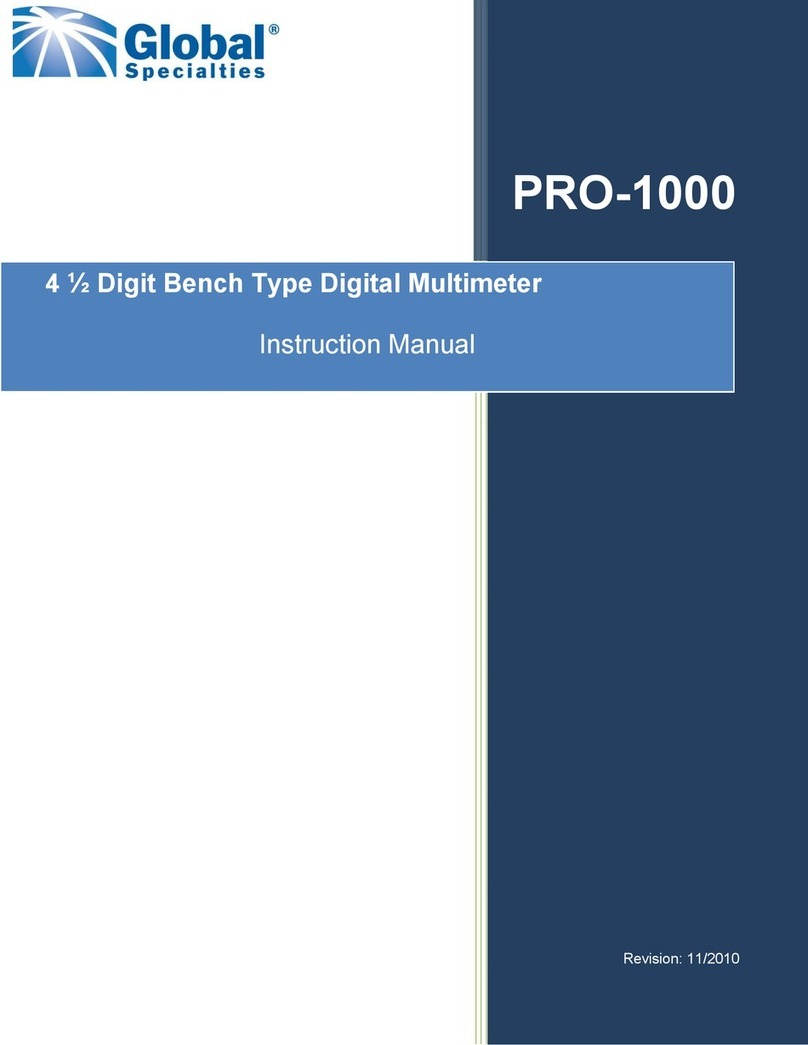
Global Specialties
Global Specialties PRO-1000 User manual
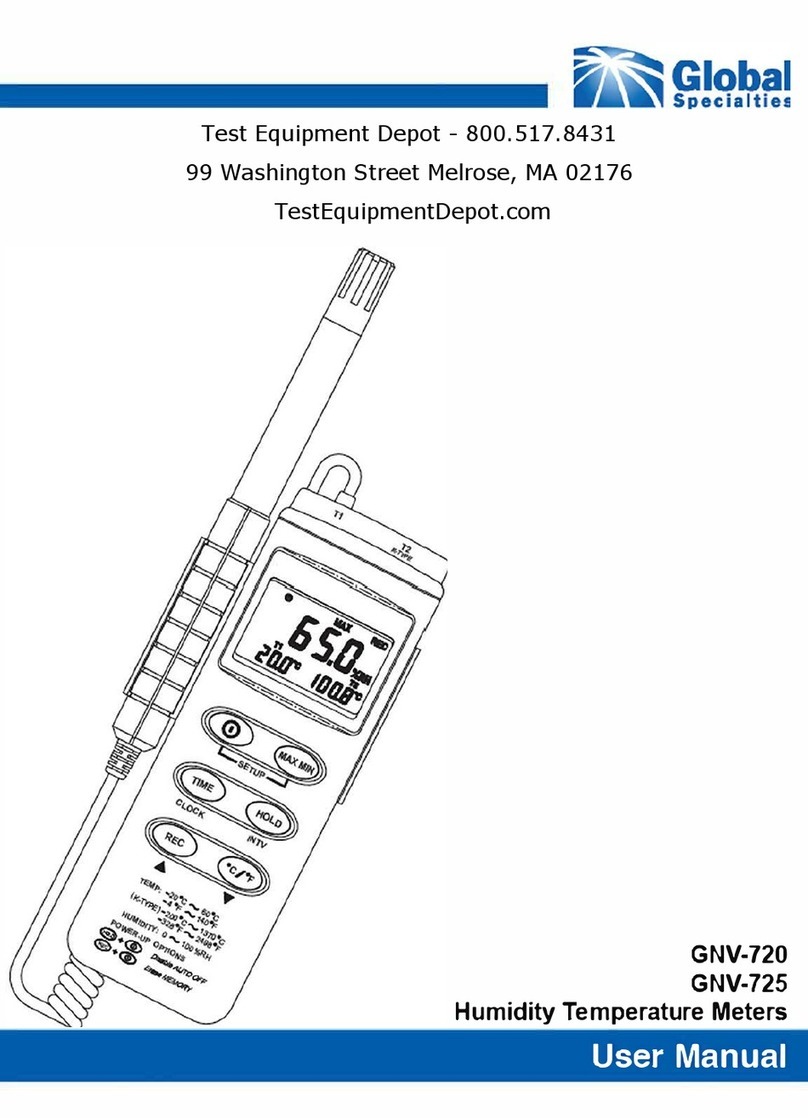
Global Specialties
Global Specialties GNV-720 User manual

Global Specialties
Global Specialties GNV-101 User manual

Global Specialties
Global Specialties GNV-101 User manual

Global Specialties
Global Specialties GNV-720 User manual
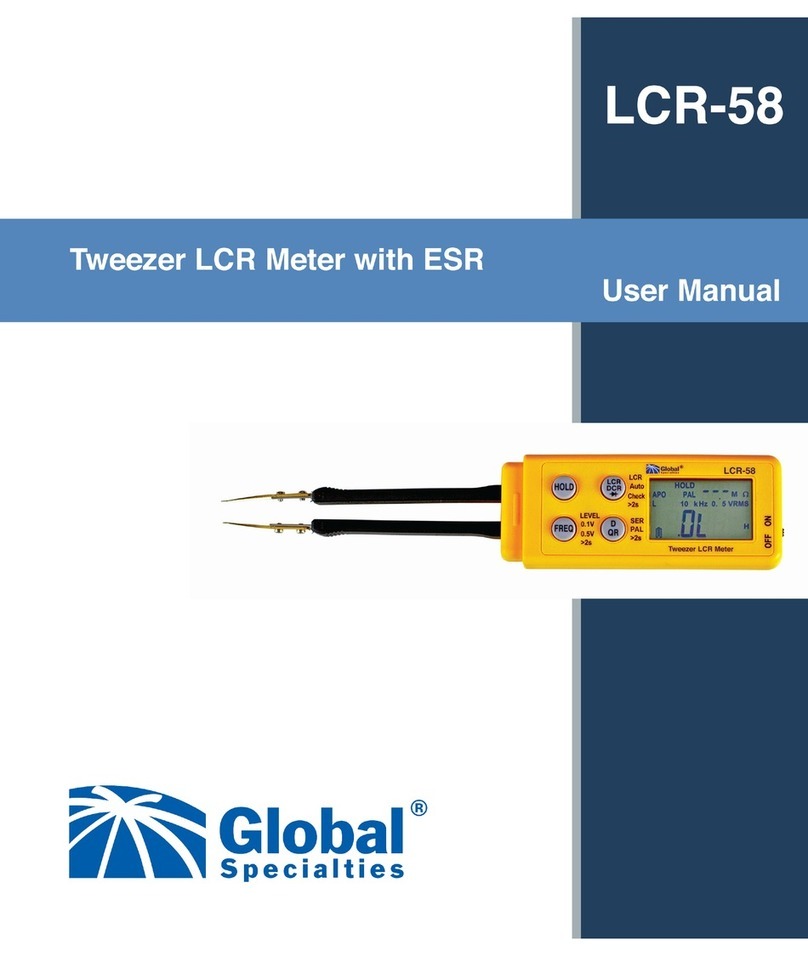
Global Specialties
Global Specialties LCR-58 User manual

Global Specialties
Global Specialties GSK-118 User manual
